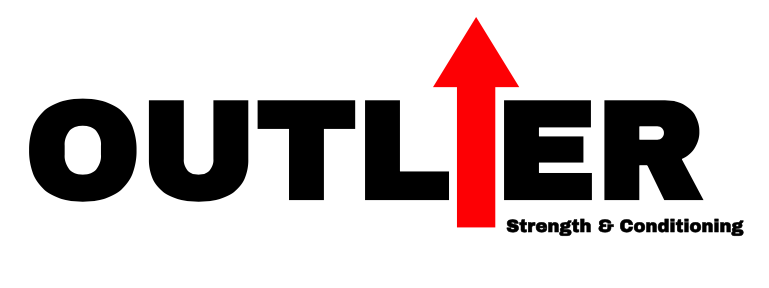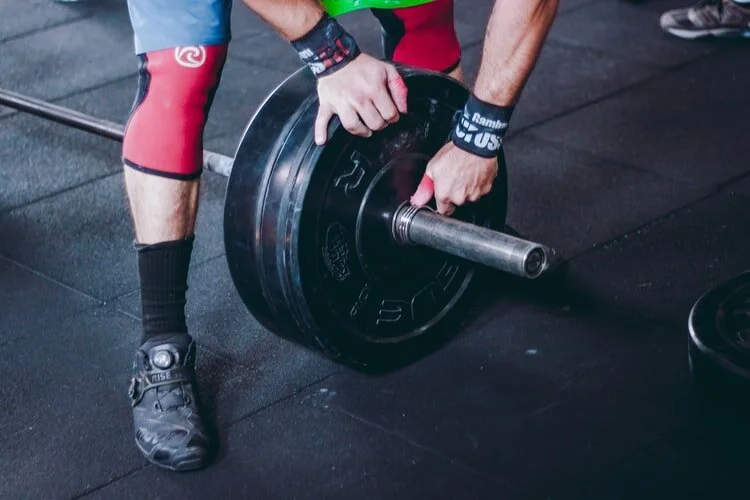5 Lessons for a Younger Me
My career in the weight room began as a bright-eyed, 140-pound freshman in high school during wrestling season, who discovered that the dips and pull-ups we were prescribed to do were more fun and rewarding for him than grappling with opponents was (yes, that’s actually me in the image for this article). Like many of the people probably reading this article, I continued chasing that obsession almost every day after school for the remainder of my high school career, and found time to train throughout undergrad and graduate school.
Looking back now, and even reviewing old training journals, I often wince at the mistakes I made along the way. I wanted to write this article for my younger self, if he was able to read this, and by extension, any young person or newcomer to the gym who is bound to make the same mistakes I did.
Problem 1: Using More Weight Than You Can Handle
This comes first because it is the most prevalent, and will continue to be the most prevalent mistake I see newcomers make. We all want to get stronger and add weight to the bar, but without sufficient technique and muscle mass to support heavier loads, dangerous situations and injuries are quick to follow.
If you train at any commercial gym, you see it all the time. The young kid under the bench press lowering the bar halfway to his chest with elbows pointing straight out sideways in an attempt to “isolate the chest”, or the girl quarter squatting who has no idea that the pain she is feeling in her lower back isn’t normal. This is commonly chalked up to ego, and this is absolutely true sometimes. We get tied to the romantic idea of telling our friends that we can “totally bench two plates”, even if the only way we can accomplish that task is with terrible form and a spotter contributing half the work. More often than that, however, I believe a lack of knowledge is the culprit. Newcomers simply don’t know how an exercise is supposed to look (and more importantly FEEL). So what should they do?
Solution: Smarter Exercise Selection
The obvious answer is to seek the help of a qualified coach or trainer to help guide you through a solid program of progressive overload and help you learn good technique (shameless plug here, check out the “coaching services” tab). Going beyond this obvious preamble, I have a few strategies I use when working with beginners.
Isometric holds are an awesome first step for beginners because they build positional awareness and mitigate risk while still eliciting a training effect. These can be for longer durations or as simple as doing dedicated pauses during reps. From there, I typically graduate beginners to tempo training. While isometrics and tempo sets can be used throughout the lifter’s career, they are especially good as primary exercises for beginners because they build technical proficiency while eliminating the risk associated with rushing a movement and getting into a bad position.
The other aspect of these techniques that makes them a good selling point for newcomers is that they are HARD. Part of the reason people use too much weight too soon is because people want to feel like they are straining, sweating, breathing hard, and that they got a good workout. Tempos and isometrics are great options here to keep the exercise subjectively difficult while making it objectively lighter and more manageable. This is especially useful for beginners who are impatient and are sick of hearing that they should simply “lighten up and focus on form”.
Problem 2: Not knowing the difference between “good” and “bad” pain
This one is often overlooked. Most beginners can’t tell the difference between “good” pain (muscle burning during set, muscle soreness in the days following) with “bad” pain (joint, ligament, and tendon pain during activity, joint soreness or stiffness in the days following). It can be hard to know as beginner when to push hard and when to pull back from discomfort, as they often have no reference point to draw from. Part of the problem is a low awareness in general for how they are moving and how their body is working and feeling.
Solution: Building Spatial Awareness
Certainly having a coach to ensure that you are not putting yourself in risky situations is ideal. If you find yourself without one, video feedback is an excellent alternative. Additionally, because lots of these problems arise because of a beginner’s low level of internal awareness, and not being able to feel very well how their body is moving, building up these qualities can help prevent injury, improve exercise economy, and bolster progress.
Building internal awareness can be done in several ways. While getting visual feedback from the mirror is often very useful for real-time assessment of technique for beginners, it can actually limit the spatial awareness you have because you can rely more on your eyesight. If you don’t have a coach, by all means start off by using mirror. As soon as your technique becomes reasonably competent, however, I recommend turning away from the mirror and going by feel alone as often as possible.
Problem 3: Copying Programs
It can be overwhelming as a beginner to arrive at the gym and have no idea of what to do once you’re inside. Most ask the advice of friends or find programs from the Internet. A common fallacy here is to seek out the “best” program that the most muscular or strong lifter they look up to is doing, and replicate it. What they fail to realize is that a high level program such as this is not at all necessary for a beginner, and can set them up for failure down the line.
Solution: Minimum Effective Dose
True beginners don’t need much volume or intensity to make steady progress. While there are essentially infinite ways to program and many of them are backed by research, the truth is that almost anything you do as a beginner will work. The question then becomes: what should you do to ensure that it KEEPS working? My solution has always been one of minimum effective dose; to do only the amount of work that is required to see progress, and not more. For a beginner this could be merely one working set per exercise. Will doing more sets (for example, a traditional 3x10) mean faster progress? Some shorter-term studies suggest that yes, it might. On the other hand, consider what happens after those initial weeks or months on the higher volume approach, once you reach your first plateau. The only way to make progress at that point is to add more volume and intensity (increasing to 4 or 5 working sets). Had you stuck with the lower-volume approach, you might only need to do two working sets instead of one, and you could continue making more sustainable progress with less volume for a longer period of time, while taxing your recovery capabilities less.
If you are looking for a proven program that incorporates a minimum effective dose ideology, I highly recommend the 1x20 Program by Dr. Michael Yessis. I have personally seen the results this sort of programming can yield for even high-level athletes.
The temptation is always to do more, and that more is always better. In terms of your long-term development, this is simply not the case. Especially when you are a beginner, all that matters is providing a sufficient stimulus for growth each session. Try to reframe your thinking and realize that adding additional training volume above and beyond what is necessary is simply a waste of energy. Getting the same amount of progress from less work is formula that equates to your training becoming more efficient.
Problem 4: Chasing the Wrong Things
People often want to hit a new 1RM every week when they first come to the gym. This type of mindset can be detrimental to a newcomer, as they will spend all of their focus and energy displaying their strength instead of building their strength. This is true of other attributes as well. It is never in one’s best interest to train intensively before they have the ability to sustain such training.
Solution: Capacity Training
I do not mean only aerobic fitness when I say that training capacity should always precede training maximal strength, speed, or power. The first few weeks and months of time in the gym are best spent, in my opinion, training the foundations that will be able to be built off of later down the line. This means developing energy systems to support performing and recovering from a higher workload, increasing muscle and structural hypertrophy to better support higher forces and higher loads, and building movement proficiency to be able to perform exercises with higher speeds and loads later down the line with a reduced risk of injury.
The ability to choose delayed gratification is a great predictor of success in all aspects of life. It is no different in the gym. Start by building a strong foundation and the subsequent peak you will achieve will be much higher than it could possibly be otherwise.
Problem 5: Neglecting Recovery
Often times newcomers to the gym are young, and view themselves as invincible. Too often I see teenagers who get 5 hours of sleep per night and consider potato chips a balanced meal. While their youth may shield them from immediately noticing an issue, it will present itself later on. The results that they are probably still getting from training early on are also nowhere near what they could be if their recovery was even a little more optimized.
Solution: Proper Sleep and Nutrition
For people of any age, the affects of physical training have tremendous health benefits all on their own. It cannot be overlooked, however, just how much these effects are magnified by getting sufficient sleep and balanced nutrition, which are just as powerful.
While this issue could easily (and might eventually) become a full-length article in and of itself, suffice it to say that you are only benefitting from the training you can recover from. If you have a higher recovery capacity, you can train more will notice more positive effects from it. Don’t neglect your sleep or your diet!
I often wish I could go back and warn my younger self about these things, but I recognize that making these mistakes was integral to my learning process, and is responsible for who I am and how I think about training today. The reason I am writing these down now is so that hopefully some other beginner out there will be able to learn from my mistakes and spare themselves from the frustrating injuries and plateaus that resulted from them.
To the trainers and coaches that might read this as well, try to remember what it was like to be an impatient beginner, and educate your clients or athletes about why their training might need to differ from what they see other people doing.
Happy Lifting!






